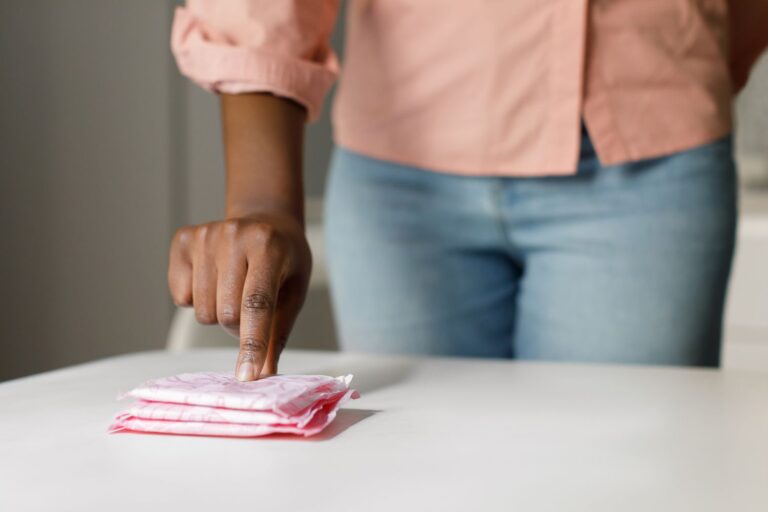The term “large vulva” refers to a vulva that appears larger than what is considered average. It’s important to understand that vulva size and shape can vary widely from one person to another. These variations are normal, and a large vulva is just one of many natural body types. In this article, we’ll explore what it means to have a large vulva, discuss the potential causes, address common concerns, and offer advice on how to care for your body with confidence.
Anatomy of the Vulva
To understand the concept of a large vulva, it’s crucial first to understand the anatomy of the vulva. The vulva is the external part of the female genitalia and includes several key components:
- Labia Majora: These are the outer lips of the vulva, which protect the inner structures. They can vary greatly in size, thickness, and appearance.
- Labia Minora: These are the inner lips, situated just inside the labia majora. Like the labia majora, they can also differ in size and shape.
- Clitoris: A small, sensitive organ located at the top of the vulva, primarily responsible for sexual pleasure.
- Urethral Opening: The opening through which urine exits the body, located just below the clitoris.
- Vaginal Opening: The entrance to the vagina, located below the urethral opening.
What Is Considered a Large Vulva?
A large vulva is often characterized by prominent labia majora or labia minora that extend beyond the labia majora. However, the term “large” is subjective and can be influenced by personal perceptions and societal standards. It’s important to note that what one person considers large may be entirely normal and unremarkable to another. Also read here: Symptoms of Too Much Progesterone HRT
Causes of a Large Vulva
Several factors can contribute to the appearance of a large vulva. These include:
- Genetics: Like many other physical traits, the size and shape of the vulva are often inherited from family members. Some women are naturally predisposed to having larger labia or a more pronounced vulva.
- Hormonal Changes: Hormonal fluctuations, particularly during puberty, pregnancy, or menopause, can affect the size of the vulva. Estrogen, a hormone responsible for sexual development, can lead to the enlargement of the labia.
- Weight Changes: Significant weight gain or loss can impact the appearance of the vulva. Increased fat deposits in the labia majora can make the vulva appear larger, while weight loss may cause the labia to appear more prominent due to reduced padding.
- Aging: As women age, the skin and tissues around the vulva may lose elasticity, causing the labia to stretch and appear larger.
- Childbirth: Vaginal childbirth can lead to stretching and changes in the size and shape of the vulva, especially if there are multiple deliveries.
Common Concerns About Having a Large Vulva
Women with a large vulva may experience a range of emotions and concerns, from self-consciousness to physical discomfort. Some common concerns include:
- Body Image Issues: Societal beauty standards often emphasize a particular look for female genitalia, leading some women to feel self-conscious about their vulva size. It’s important to remember that there is no “normal” when it comes to vulva appearance.
- Physical Discomfort: A large vulva may cause chafing, irritation, or discomfort, particularly during activities like exercise, cycling, or wearing tight clothing. This can sometimes lead to soreness or infections if not properly managed.
- Sexual Confidence: Some women may feel anxious about how their vulva looks during intimate moments, leading to concerns about their partner’s perception or enjoyment. Open communication with partners and education about body diversity can help alleviate these worries.
- Hygiene Concerns: Maintaining hygiene can be a challenge for some women with a large vulva, as folds of skin can trap moisture and bacteria, potentially leading to infections.
How to Care for a Large Vulva
Proper care of the vulva, regardless of size, is essential for maintaining comfort, health, and confidence. Here are some tips for taking care of a large vulva:
- Practice Good Hygiene: Gently clean the vulva with warm water daily. Avoid using harsh soaps or douches, as these can disrupt the natural balance of bacteria and cause irritation.
- Wear Comfortable Clothing: Opt for loose-fitting, breathable clothing made from natural fabrics like cotton. This helps reduce the risk of chafing and allows for better air circulation.
- Use Lubricants: If you experience discomfort during sexual activity, consider using a water-based lubricant to reduce friction and enhance comfort.
- Stay Hydrated: Drinking plenty of water helps maintain the skin’s elasticity and overall health, including the delicate skin of the vulva.
- Seek Medical Advice if Needed: If you experience persistent discomfort, pain, or changes in your vulva’s appearance, it’s important to consult a healthcare provider. They can help determine if there are any underlying issues that need to be addressed.
Addressing Myths and Misconceptions
There are many myths and misconceptions surrounding the appearance of the vulva, particularly when it comes to size. Let’s address a few common ones:
- Myth: A Large Vulva Is Unhealthy: There is no medical basis for considering a large vulva unhealthy. As long as you are comfortable and free from symptoms like pain or infection, a large vulva is just another variation of normal.
- Myth: A Large Vulva Affects Sexual Function: The size of the vulva does not determine sexual pleasure or function. Sexual satisfaction is influenced by many factors, including emotional connection, communication, and overall health.
- Myth: Surgery Is Necessary: Some women may consider labiaplasty (surgery to reduce the size of the labia) due to concerns about appearance or discomfort. While this is a personal choice, it’s important to thoroughly discuss the risks and benefits with a qualified healthcare provider before making any decisions.
Embracing Body Positivity and Diversity
Body positivity is about embracing and accepting all body types, including the natural variations of the vulva. It’s essential to challenge societal standards that dictate what is “normal” or “beautiful” and to celebrate the diversity of women’s bodies. Education, self-love, and open dialogue are key to fostering a positive body image.
When to Seek Medical Attention
While a large vulva is usually not a cause for concern, there are certain situations where medical advice may be necessary. If you experience any of the following symptoms, it’s important to consult a healthcare provider:
- Persistent Pain or Discomfort: If you experience ongoing pain or discomfort that interferes with your daily activities, seek medical evaluation to rule out underlying conditions.
- Changes in Appearance: Sudden changes in the size, color, or texture of the vulva, especially if accompanied by itching or discharge, may indicate an infection or other health issue.
- Bleeding or Ulceration: Any unusual bleeding, sores, or ulcers on the vulva should be evaluated by a healthcare provider.
Conclusion
Having a large vulva is a natural variation of the human body and should not be a source of shame or discomfort. By understanding the factors that contribute to vulva size, addressing common concerns, and practicing good self-care, women can feel confident and comfortable in their bodies. Remember, every vulva is unique, and embracing that uniqueness is key to a positive and healthy self-image.














2 thoughts on “What Are the Common Concerns About Large Vulvas?”